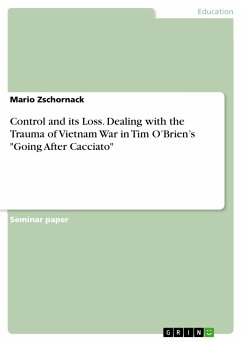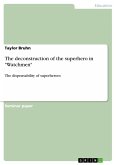Seminar paper from the year 2015 in the subject Didactics for the subject English - Literature, Works, grade: 2,0, University of Rostock (Institut für Anglistik/Amerikanistik), course: Seminar Literaturwissenschaft, language: English, abstract: In film and in literature there are narratives that are portrayed in a special way. Their events seem to be told in the wrong order. The first contact with this kind of narrative technique can evoke an unsatisfied feeling, because a non-chronological order of happenings in the first chapters of a book can lead to incomprehension. The novels Going After Cacciato by Tim O'Brien and Catch 22 by Joseph Heller, we dealt with in the seminar "Between the Lines: American War Novels", are narrated with this complex technique. They are called nonlinear narratives. I decided to write a paper about how Tim O'Brien accomplished to portray the trauma of war with his novel Going after Cacciato. This is one of six novels he published, dealing with Vietnam War. In the second chapter I start to divide the novel into its three parts that could function as stories on their own and I analyse the narrative communication and its function within these parts. The third chapter deals with the major themes of the novel. The theme of control and its loss is discussed in a subchapter, because it is a central one and can be associated with the special narrative technique. In chapter four I analyse how structure and narrative communication assemble the content and main themes in Going After Cacciato harmonious. It creates the feeling of reading about traumatic experiences at Vietnam War. The novel contains a mythical, fictional story within the story and therefore distinct ambiguities that are discussed in this chapter.
Dieser Download kann aus rechtlichen Gründen nur mit Rechnungsadresse in A, B, BG, CY, CZ, D, DK, EW, E, FIN, F, GR, HR, H, IRL, I, LT, L, LR, M, NL, PL, P, R, S, SLO, SK ausgeliefert werden.









